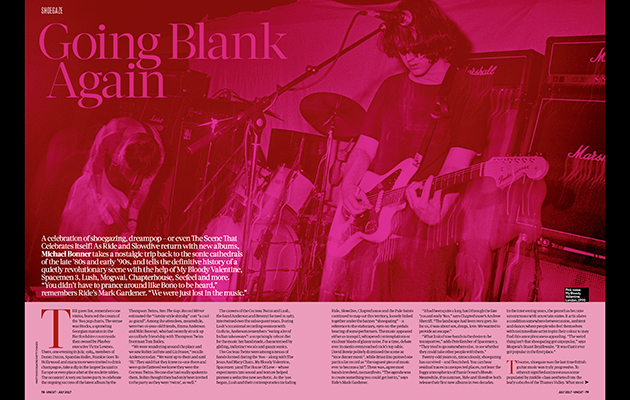Lush spent much of 1991 recording their debut album, Spooky, with Robin Guthrie. “He brought some ‘friends’ to the studio,” remembers Emma Anderson. “There was this guy who had acted in Gorillas In The Mist. He’d played a gorilla in the film. He sat in the studio while we were trying to record, which we weren’t too happy about.”
Gorillas aside, Anderson describes 1991 as “the time I look back on with the most fondness. It was before grunge. When Spooky came out [in January, 1992], the backlash started.”
In late summer, Melody Maker ran a story headed, ‘Whatever happened to shoegazing?’ In it, Damon Albarn observed, “Bands like Chapterhouse, Ride and Slowdive had a wonderful pubescent quality. But they were sort of ‘The End Of Indie’. A culmination. It had nowhere else to go.” His point was prescient: the next wave of British bands chose a different path, drawing inspiration from the music of the mid-Sixties.

In Spring 1993, Suede released their debut album and Blur released Modern Life Is Rubbish: ambitious, anthemic records that seemed to have nothing in common with the melodic descents or subdued rhythms of their predecessors. Damaged by grunge, shoegazing now seemed to be mortally wounded by Britpop. Yet, surprisingly, it offered instead fresh new permutations, presented by Flying Saucer Attack’s rural psychedelia and Seefeel’s happy union between the ambient, textured qualities of shoegazing and experimental electronic sounds. “The Cocteaus radically altered the way I thought about music and how it was formed or structured,” says Seefeel’s Mark Clifford. “When Loveless was released, it had a big impact on me. Perhaps not so much in wanting to sound like them as wanting to import some of their sensibilities, ideas and disciplines and export them as something different.”
Flying Saucer Attack and Seefeel demonstrate both diversity and creative energy. Meanwhile, as Ride readied the regressive, Sixties-influenced Carnival Of Light in early 1994, Bark Psychosis released Hex. An album of textured, ghostly soundscapes, it signaled yet another resourceful shift.
As a term, ‘shoegazing’ had become a pejorative. “Shoegaze became a dirty word,” Emma Anderson explains. “I felt a bit dismayed. No one would ever call a credible band like Mogwai shoegazers. They were, ahem, ‘post rock’.”
Evidently, ‘shoegaze’ still continues to evoke bad memories in some quarters. Several bands – including Slowdive – refused to participate in this piece.
“I saw it as an English label,” says Mark Gardener. “We toured Japan, America, no one ever talked about shoegazing. The idea that we just stood there, staring down at our pedals… I thought, ‘They haven’t been to any of our shows!’ I also didn’t like that it implied a degree of apathy. We were very passionate about what we were doing. But it reminded me, perhaps romantically, of the Velvet Underground. The idea that you could stand still and make a load of noise. You didn’t have to prance around like Bono or Jim Kerr to be heard.”
“The whole scene was about music that was being made by people who weren’t performers,” continues Andrew Sherriff. “We were all pretty suspicious of showboating. There was never any intricate guitar solos in our music. I suppose shoegazing was the opposite of sticking your foot on the monitor and preening at the crowd.”
“I made a record with Rachel from Slowdive,” says Stuart Braithwaite. “In reviews people couldn’t even bear that someone from Slowdive was still making music. They were really despised. It just seemed mad. Of all the bands in the world to get angry about. Really?”



